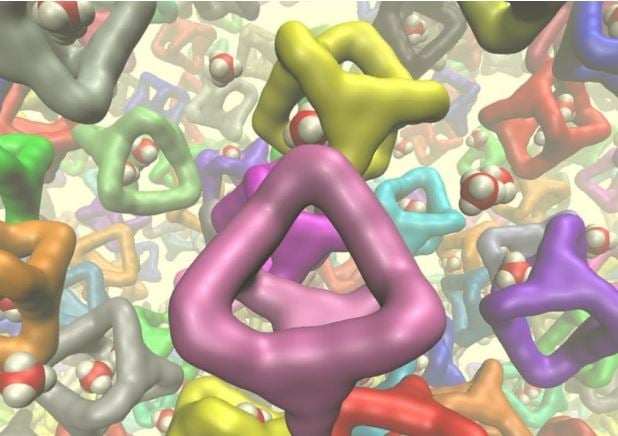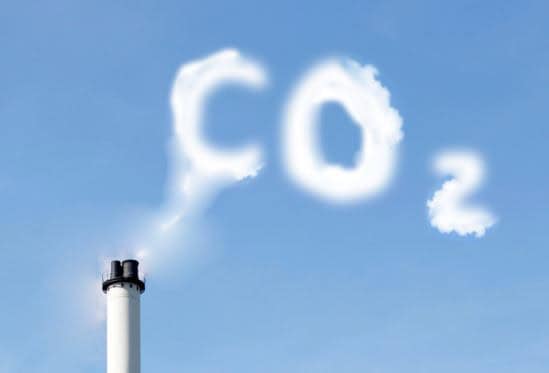An ultra-porous liquid that absorbs incredible quantities of gas in its tiny holes, invented by an international team of researchers, could become our solution for carbon capture – preventing the major greenhouse gas CO2 (carbon dioxide) released by burning fossil fuels from entering the atmosphere and warming up our planet and damaging our oceans.
The scientists, from Queen’s University Belfast’s School of Chemistry and Chemical Engineering, along with colleagues from Germany, Argentina, the UK and France, explained in the peer-reviewed journal Nature how they created an incredible, new liquid that can dissolve gas – and in surprisingly huge amounts.
Tiny holes within the newly-created liquid absorb the gas, they explained.
 Could this be the Holy Grail in our carbon capture quest? (Image: Queen’s University, Belfast)
Could this be the Holy Grail in our carbon capture quest? (Image: Queen’s University, Belfast)
Protecting the atmosphere from CO2 emissions
Professor Stuart James, a mechanochemical synthesis researcher, said the three-year scientific project is likely to lead to a number of more efficient and greener process, including trapping the CO2 emitted from the burning of fossil fuels before it gets into the atmosphere.
Prof. James said:
“Materials which contain permanent holes, or pores, are technologically important. They are used for manufacturing a range of products from plastic bottles to petrol. However, until recently, these porous materials have been solids.”
“What we have done is to design a special liquid from the ‘bottom-up’ – we designed the shapes of the molecules which make up the liquid so that the liquid could not fill up all the space.”
“Because of the empty holes we then had in the liquid, we found that it was able to dissolve unusually large amounts of gas. These first experiments are what is needed to understand this new type of material, and the results point to interesting long-term applications which rely on dissolution of gases.”
The research team said further study is needed in order to find new applications for this porous liquid, which they believe will be used in several new or improved chemical processes.
 CO2 is a major greenhouse gas. Burning of carbon-based fuels since the industrial revolution has dramatically increased its concentration in the atmosphere, leading to global warming. It is also a leading cause of ocean acidification as it dissolves in water to form carbonic acid.
CO2 is a major greenhouse gas. Burning of carbon-based fuels since the industrial revolution has dramatically increased its concentration in the atmosphere, leading to global warming. It is also a leading cause of ocean acidification as it dissolves in water to form carbonic acid.
The holes in the liquid trap gases
The scientists said that they have managed, at the very least, to demonstrate an entirely new principle – that by creating tiny holes in liquids, the amount of gas they can dissolve is dramatically increased.
Prof. James added:
“These remarkable properties suggest interesting applications in the long term.”
The study was led by Queen’s University Belfast, whose scientists worked with colleagues from the the Université Blaise Pascal, France, the University of Liverpool, England, the Universität Kiel, Germany, and the Universidad Nacional de Cuyo, Argentina.
The scientific project was funded by the Leverhulme Trust and the Engineering Physical Science Research Council (Britain’s main agency for funding research in engineering and the physical sciences).
Reference: “Liquids with permanent porosity,” Klaus Rätzke, Nicola Giri, Mario G. Del Pópolo, Margarida F. Costa Gomes, Rebecca L. Greenaway, Gavin Melaugh, Laure Pison, Tönjes Koschine, Andrew I. Cooper & Stuart L. James. Nature 527, 216–220. 12 November, 2015. DOI: 10.1038/nature16072.
Video – Porous liquid absorbing gas
This is a supplementary video from the scientific study carried out by Prof. James and team.

